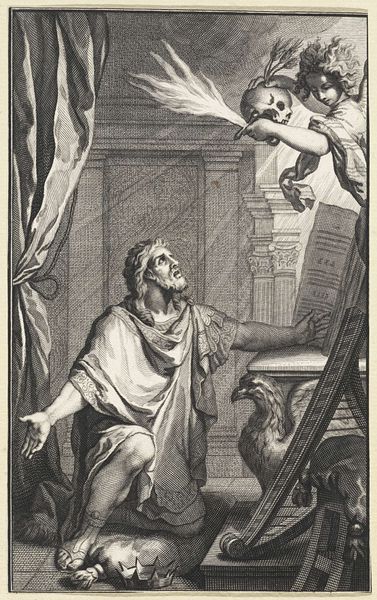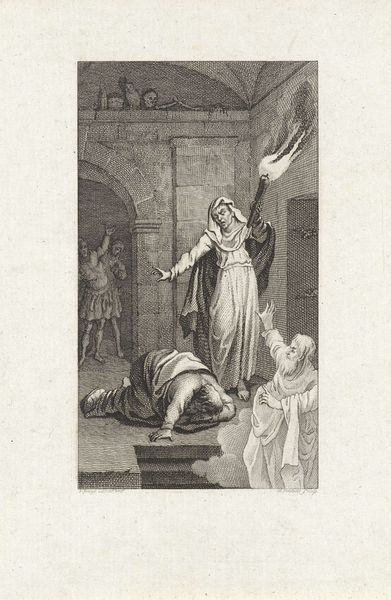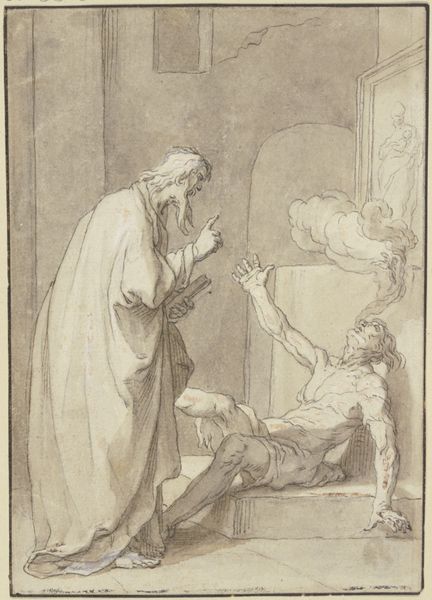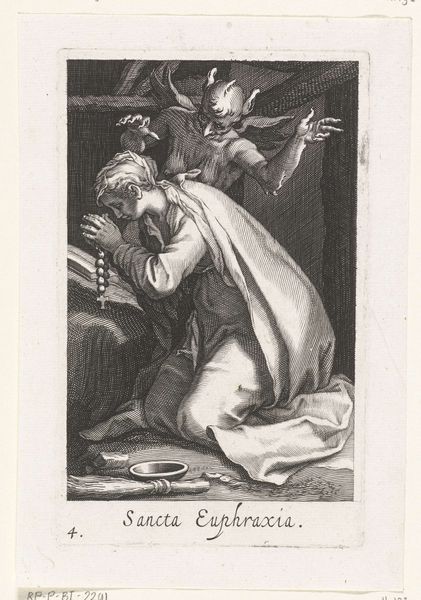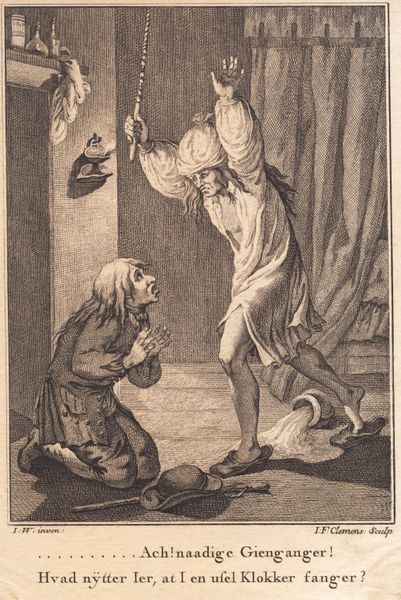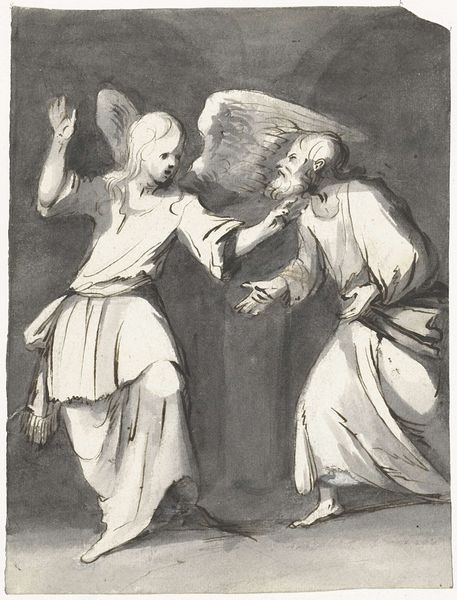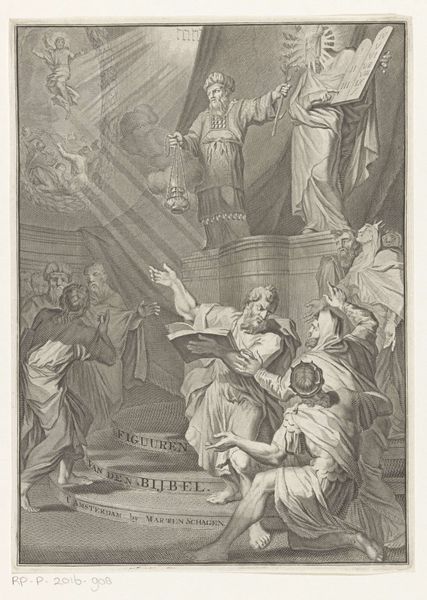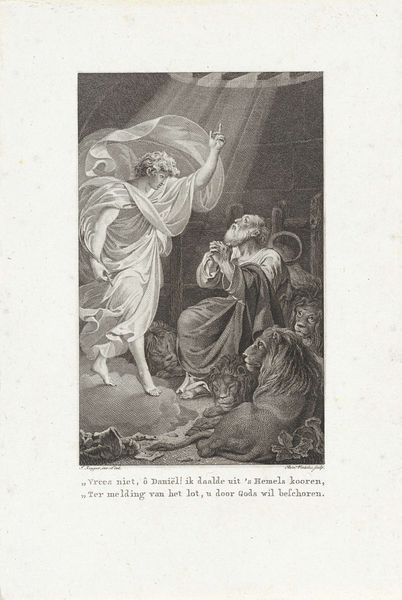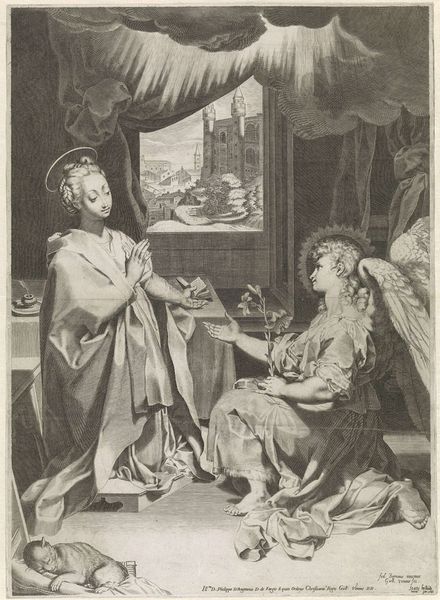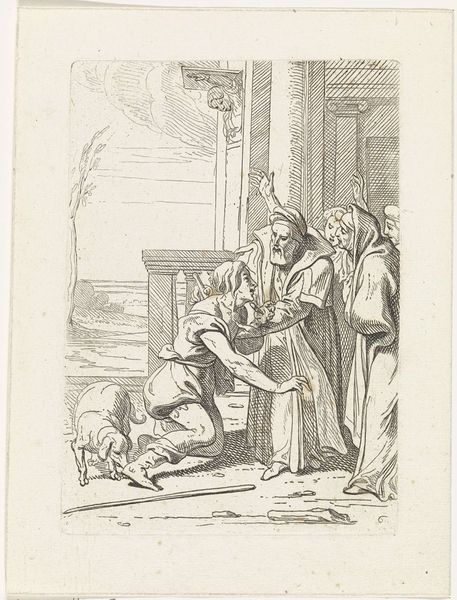
engraving
#
baroque
#
figuration
#
history-painting
#
engraving
Dimensions: height 135 mm, width 85 mm
Copyright: Rijks Museum: Open Domain
Curator: Good morning, everyone. We are standing before Frederick Bloemaert's engraving, "Heilige Paulus van Egypte (II)", from after 1636, here at the Rijksmuseum. It’s a rather striking composition, isn’t it? Editor: Striking indeed. There's a rawness, an almost violent energy in the figure on the left. His pose is so…unbalanced, almost grotesque, while the other looms in a self-righteous manner. Curator: Let's delve into that formal contrast. Notice the sharp, clean lines of the figure on the right, composed and draped, as opposed to the rough, almost scratchy texture defining the first figure’s body. The artist has created two clear distinct visual spaces, and characters within them, don’t you agree? Editor: I agree completely. And isn’t that telling? One is the established, almost judgemental figure of religious authority. While the figure on the left evokes notions of suffering, revelation. See how this connects to our visual memory? Curator: The iconography certainly reinforces that duality, and speaks to a spiritual transformation. Though even absent any knowledge of that specific historical scene, you would surely agree that the careful structuring of shadow emphasizes the reclining figure’s dramatic physicality. The artist guides us formally into experiencing both this transformation and contrast. Editor: Exactly. Think of all of the artistic renditions you may recall depicting similar scenes—conversion, enlightenment—where a before-and-after state is literally embodied in the two central figures. And also recall that fire imagery always brings to mind concepts such as trials, transformation and ultimately a "spiritual cleansing." It carries such heavy cultural and psychological weight. Curator: Interesting observations. It's fascinating how Bloemaert uses the simple lines of an engraving to explore those sorts of ideas. In considering the composition alone, you notice that it becomes much more dynamic due to the placement of the two figures in conversation with one another. It pulls our eyes through the composition rather brilliantly. Editor: Absolutely. Visual symbols, skillfully employed to continue those recognizable stories from one generation to the next. I find these continuities through history utterly enthralling. Curator: Agreed. So, as we conclude our viewing, let us consider that these precise engravings often carry so many threads of social, and religious understanding, woven deftly into simple line. Editor: A visual emblem from the 17th century that still speaks of the complexities of change. The weight of belief, passed down and reimagined. Thank you for this insightful exploration.
Comments
No comments
Be the first to comment and join the conversation on the ultimate creative platform.
